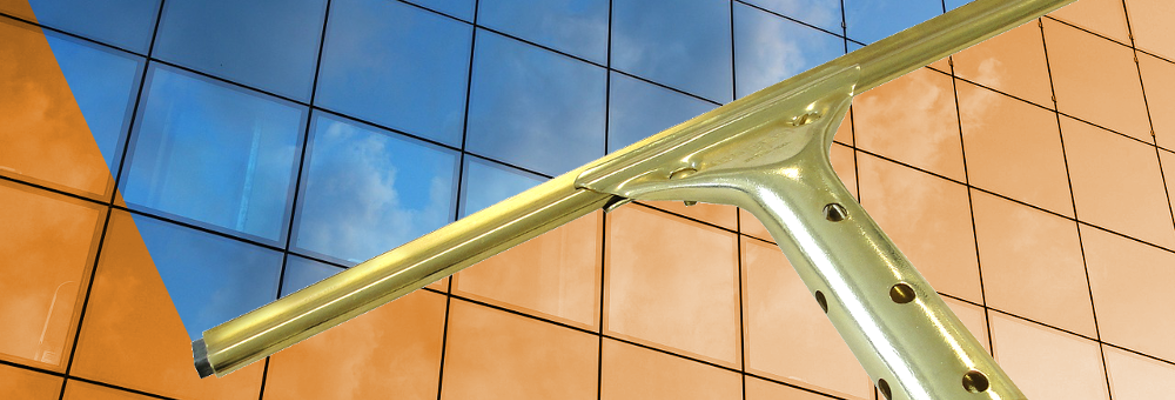
With all of the choices in the professional window cleaning supplies market, picking the right brush for your waterfed pole cleaning can seem like a challenge. Learning about the anatomy of a waterfed brush can help make sense of what they contain and what you may need for your pure water cleaning needs.
When cleaning windows with pure water, the brush is an important part of getting the best scrub AND rinse on the glass. The bristles need to agitate debris from the glass. However, the brush also needs to be able to release that debris, so the pure water can do its part and rinse the surface to leave behind only a shine.
Let’s look at the basic part of a typical brush:
- The socket- The socket is the way the bush attaches to the pole.
- The sprayers- The nozzles that mount or insert into the block to deliver the water out of the brush.
- The water hose attachment- The way that the pole hose transitions the water to the brush sprayers.
- The block- The piece of material that the bristles are mounted into.
- The bristles- The hairs or fibers or strands that are mounted into the block.
The parts might seem simple, but it is worth taking the time to understand them and their purposes. This will help you to pick the right brush for your water pole and system.
The socket secures the brush to the end of your pole. Different brands use different styles. Tucker, Unger, and Ettore all use a fine thread style. Gardiner uses a square locking style. Sockets can be moved from brush to brush. Also, there are goosenecks that will help transition, say a fine threaded pole tip to a square locking socket.
The block is straight forward. But it is worth mentioning as some blocks are designed to provide the lightest weight possible. Every ounce will matter when working at greater heights with water poles. The higher your work, the more important keeping the weight of your pole down will be.
The bristles are the most discussed part of the brush. The types of bristles vary, the most commonly used in pro window cleaning pure water brushes are natural hair (often boar or horse), nylon bristles or the newest hybrid bristles.
- Natural bristle brushes have been used for window cleaning for decades.nThese retain water easily and scrub with the entire length of the bristle. A little heavier, but due to the dense nature of these bristles, while they scrub well, they can hold onto debris a bit more than the synthetic bristles.
- Nylon bristle brushes are lighter in weight and release debris a little more effectively. However, with nylon bristles, most of the scrubbing action happens at the tip of the bristles. Bristles are flagged or split at the tips. This means that you do not necessarily get better scrubbing by pushing harder with the nylon bristles. However, the plus of the nylon is the wide variety of orientation and shape of brushes available on the market. There are also a wider variety of sizes, from 5 inch up to 18 inches in stock. Many manufacturers continue to push innovation to try to provide the ultimate combination of bristle lengths, textures and orientations.
- Synthetic hybrid brushes are the latest versions to enter the market. They have been designed to include finely tapered synthetic bristles of multiple height and bristle tip material types. These bristles have been designed to work like natural bristles, but with more consistent design. The newest innovation seems to provide more aggressive scrubbing when pushed hard due to the variety of the characteristics of the bristles.
There are two basic styles of sprayers, pencil and fan. Pencil style provide a solid stream of water while the fan provides more of a fan spray pattern. These options become important as you encounter different types of glass or surfaces.
The water hose attachment is simply the way the water connects from the pole hose to the brush. Some brushes offer more sprayer jets than others. It is common to see 3-way connectors or 5-way connectors to split the water as it travels. Also, you will see rinse bars options on the market as well. Each will offer certain characteristics like how much water is delivered, the spray pattern, the number of jets, and the pressure that it is delivered with.
The brush is an essential component in your water pole system. By understanding the basic anatomy and components, you should be able to make a more educated decision about which you keep in your tool box!
Check out the full line of brushes from the top manufactures on our website. For more questions call us at (800) 535-6394 or send us an email to customerservice@detroitsponge.com. Our Detroit Sponge team wants to help you find the right brush for your window cleaning needs!

